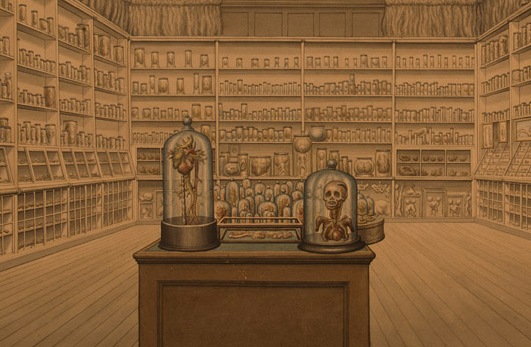In 14 Hanover Square, in the home of surgeon John Heaviside (cited in era periodicals as Heavyside), was a museum of anatomical specimens. Largely purchased from Henry Watkin’s collection, the specimens included various diseased human bones, insect specimens, tumors, organs, models, and casts.
Heaviside (1748-1828) taught at St. Bartholomew’s Hospital, and upon inheriting a sizeable sum from his father, set up his own “school” of anatomy at the fashionable address in Hanover Square (Turnbull, 2017). In addition to his students, Heaviside opened his house Friday evenings through winter and spring to various gentlemen, which increased his fame but, as his obituary would suggest, also perhaps was for all the wrong reasons; attendees were reputedly there mostly for the coffee, tea, and sugar.

The picture of London, for 1802
It was enough of a hot spot to feature mention in many London guides. Heaviside would also get many future shout-outs in publications from various doctors and surgeons, when publishing observations about various medical conditions.
The Crypt, Or Receptacle for Things Past, and West of England Magazine (1828)
Read more and view some relevant images: https://www.rcseng.ac.uk/museums-and-archives/hunterian-museum/past-exhibitions/londons-lost-museums/john-heavisides-collection/
Turnbull, P. (2017). Science, Museums and Collecting the Indigenous Dead in Colonial Australia. Germany: Springer International Publishing.










